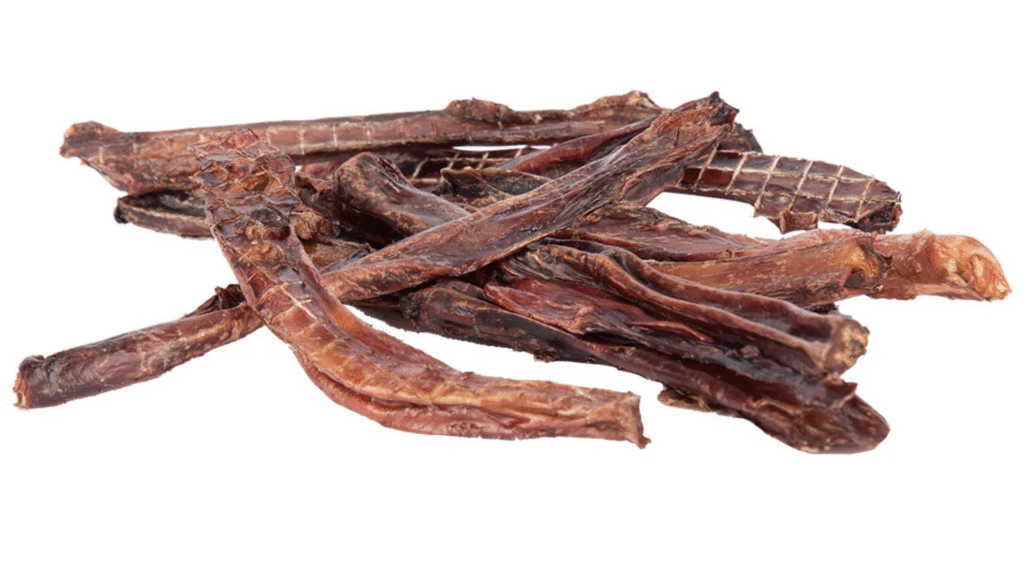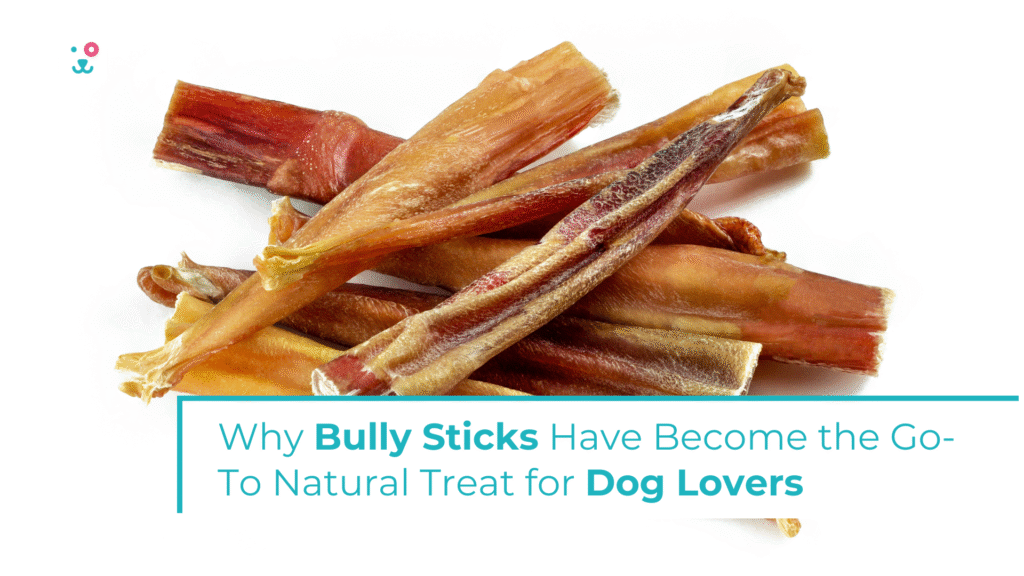Our relationship with our dogs has changed dramatically over the years. Most of us now consider our furry friends full family members who deserve the best care possible. This shift in perspective has made many dog owners much more careful about what they feed their pets, including treats. In this new landscape of conscious pet parenting, bully sticks have surged in popularity as a natural chewing option that both dogs and their humans can feel good about.
What Exactly Are Bully Sticks?
Bully sticks might have an innocent-sounding name, but they’re actually made from a single, somewhat surprising ingredient: bull penis. While this origin might make some people a bit uncomfortable at first, the simplicity of this single-ingredient treat is exactly what appeals to many pet owners today.
Unlike many commercial dog treats that contain long lists of preservatives, fillers, and artificial ingredients, bully sticks offer something refreshingly straightforward. They’re typically processed through cleaning, stretching, twisting, and drying the raw material. Some manufacturers add flavors or smoke them, but many pet owners prefer the plain versions since they avoid additional ingredients.
This uncomplicated approach fits perfectly with the growing trend toward natural, minimally processed pet products. For dogs with food sensitivities or owners who worry about mystery ingredients, bully sticks provide a clear alternative to heavily processed options.

Health Benefits Beyond the Natural Factor
Veterinarians often recommend bully sticks for several compelling health reasons that go beyond their natural composition.
The physical act of chewing helps satisfy an important natural urge for dogs. Chewing can help reduce stress and anxiety in many dogs by giving them a productive outlet for their energy and natural instincts. Rather than chewing on furniture or shoes, a bully stick redirects this behavior to something appropriate.
The dental benefits are significant too. The mechanical action of gnawing on these dense treats helps clean teeth by scraping away plaque and tartar buildup. While they’re not a replacement for regular dental care, they can be a helpful supplement to brushing.
Digestibility is another advantage. Made primarily of collagen, bully sticks break down more easily in a dog’s digestive system compared to some synthetic alternatives or even rawhide, which has been associated with digestive blockages when dogs swallow large pieces.
Quality Varies Widely
Not all bully sticks offer the same benefits or safety profiles. The sourcing and manufacturing processes can differ dramatically between brands, leading to significant variations in quality.
The best manufacturers prioritize cattle from countries with strong agricultural regulations and safety standards. Higher-quality products typically undergo more thorough testing for potential contaminants and pathogens that could affect your dog’s health.
One unavoidable aspect of bully sticks is their distinctive smell, though the intensity varies based on processing methods. Generally, better quality sticks that have been more thoroughly cleaned and dried tend to have less potent odors, which human family members certainly appreciate.
Safety-conscious pet owners should also be aware of choking risks. Many veterinarians recommend taking away the last inch or two of the stick to prevent dogs from swallowing a chunk that could cause choking or blockages. Several companies now make bully stick holders specifically designed to secure the end of the stick and prevent this problem.
Environmental Considerations
As more pet owners think about sustainability, the environmental impact of pet products has come under increased scrutiny. Bully sticks present an interesting case in this conversation.
They utilize parts of cattle that might otherwise be discarded, which aligns with sustainable “whole animal” philosophies that aim to reduce waste in meat production. Creating value from these byproducts means more efficient resource utilization.
However, it’s worth noting that beef production generally has significant environmental implications regarding land use, water consumption, and greenhouse gas emissions. This has prompted some environmentally conscious pet owners to look for alternatives from more sustainable sources.
In response, several companies now offer bully sticks sourced from free-range, grass-fed cattle raised with more sustainable farming practices, which can substantially reduce the environmental footprint compared to conventional methods.
The Cost Factor
Quality bully sticks aren’t the cheapest treat option, typically costing between $2-5 each depending on their size and quality. This higher price compared to mass-produced synthetic chews reflects several factors: limited raw material supply, more careful processing requirements, and growing consumer demand.
Many pet parents find the investment worthwhile, however, when they consider the benefits. A good bully stick can keep many dogs happily occupied for hours, making the cost-per-minute of entertainment quite reasonable compared to toys that might be destroyed in minutes.
How long a bully stick lasts varies significantly depending on your dog’s size and chewing style. Strong, determined chewers might go through even thick bully sticks relatively quickly, while gentler dogs might make the same treat last for days.
The Expanding Bully Stick Market
As these treats have grown in popularity, manufacturers have introduced variations beyond the traditional straight stick. Today you can find braided versions that last longer for aggressive chewers, ring shapes that offer different chewing angles, and spiraled designs that engage dogs differently.
The market has also expanded to address size-specific needs. There are now mini sticks for smaller breeds and extra-thick options for powerful chewers. This specialization shows how the category has matured. Pet owners have become more particular about which specific products work best for their individual dogs.
For dogs with beef sensitivities, similar natural chewing options made from different animal tissues have entered the market. Tendons, tracheae, and other single-ingredient chews from alternative animal sources now provide options for dogs who need to avoid beef but can still benefit from natural chewing experiences.

Choosing the Right Option for Your Dog
With so many choices available, finding the right bully stick for your dog takes some consideration. Veterinarians typically suggest thinking about your dog’s size, chewing habits, and any dietary restrictions when selecting these treats.
Dog chews for aggressive chewers, thicker varieties or braided options provide more substantial, longer-lasting challenges. Dogs new to natural chews might do better with thinner, more manageable sizes to build their confidence.
Regardless of which style you choose, supervision is important, especially when your dog is first trying these treats. Like any chew, there’s always some risk if large pieces are swallowed.
It’s also worth remembering that bully sticks should be treated as occasional rewards, not daily staples of your dog’s diet. Despite their natural composition, they contain significant calories, with an average 6-inch stick providing about 80-90 calories, which can be substantial for smaller dogs.
Also Read: Are Bully Sticks for Dogs Safe? A Complete Guide for Pet Owners
Natural Treats and the Future
As the bond between humans and their pets continues to deepen, with more people viewing their animals as family members deserving thoughtful care, natural products like bully sticks will likely remain popular. Market research consistently shows growth in natural and limited-ingredient pet products as more owners educate themselves about what goes into their pets’ food and treats.
This growing awareness extends beyond just bully sticks to impact the entire pet industry. The success of simple, single-ingredient products demonstrates that today’s pet owners are increasingly willing to pay more for items they believe are healthier, safer, and better aligned with their values about both nutrition and sustainability.
For pet owners navigating the sometimes overwhelming world of dog treats, bully sticks offer a relatively straightforward option that addresses many common concerns. They satisfy dogs’ natural urge to chew, provide dental benefits, offer digestible nutrition, and come from a single, identifiable source.
In a pet marketplace increasingly filled with complex formulations and bold marketing claims, there’s something reassuring about the simplicity of these treats. Their popularity is a reminder that sometimes the most straightforward approach to pet care is the most effective. These treats give our canine companions something they truly enjoy while also addressing their natural needs.

